Thoughts From Toski
USGTF Member, Boca Raton, Florida
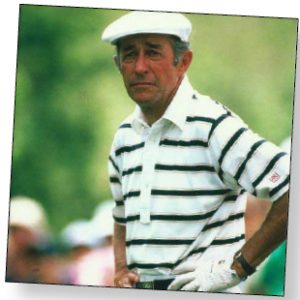 I have been asked to write this article at the request of Bob Wyatt, who was in my junior class at my first club job at Kings Bay in Miami, Florida, in 1957, after I retired from the tour.I have read the series of articles in your magazine and must compliment those instructors who have passed on their knowledge of the golf swing and golf in general. In observing the modern golf swings today, I have noticed the following techniques:
I have been asked to write this article at the request of Bob Wyatt, who was in my junior class at my first club job at Kings Bay in Miami, Florida, in 1957, after I retired from the tour.I have read the series of articles in your magazine and must compliment those instructors who have passed on their knowledge of the golf swing and golf in general. In observing the modern golf swings today, I have noticed the following techniques:


 a ladies group coaching session at a golf academy in the town. My general fact-finding included, “What were you working on? What was the theme of the lesson? Any drill to work on at the end?” This enables me as a teacher/coach to see whatever has been learnt, can be reenforced if applicable, and allows us to move on to the next stage.
Jean informed me that during the one-hour class there was no
theme, next to nil instruction, 17 ladies in the group and two teachers, one of whom spent 20 minutes with one pupil. This came as no surprise to me. Wherever I have traveled in the world, I source out
driving ranges and study at a distance what is happening in that area on a teaching level, whether it be group or individual tuition. On the whole, the standard of group coaching is not of the quality it should be. How many of you have been educated in how to instruct groups? A group can be a couple where “one half plays and the other wants to learn,” children of all ages and abilities, ladies and gents of all standards, and so much more.
Here is an example of a typical one-hour lesson for a group of golfers new to the game, using a six pupils-to-one teacher ratio:
a ladies group coaching session at a golf academy in the town. My general fact-finding included, “What were you working on? What was the theme of the lesson? Any drill to work on at the end?” This enables me as a teacher/coach to see whatever has been learnt, can be reenforced if applicable, and allows us to move on to the next stage.
Jean informed me that during the one-hour class there was no
theme, next to nil instruction, 17 ladies in the group and two teachers, one of whom spent 20 minutes with one pupil. This came as no surprise to me. Wherever I have traveled in the world, I source out
driving ranges and study at a distance what is happening in that area on a teaching level, whether it be group or individual tuition. On the whole, the standard of group coaching is not of the quality it should be. How many of you have been educated in how to instruct groups? A group can be a couple where “one half plays and the other wants to learn,” children of all ages and abilities, ladies and gents of all standards, and so much more.
Here is an example of a typical one-hour lesson for a group of golfers new to the game, using a six pupils-to-one teacher ratio:
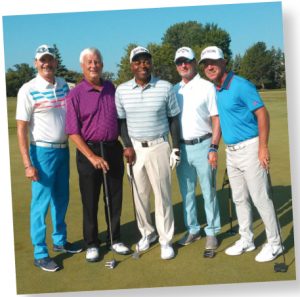 The private one-on-one golf lesson is the staple and the generally accepted image instructors rely on to build a teaching business. Too often, talented golf instructors overlook an obvious
tool to grow their base of students and promote themselves while producing revenue without using a chunk of financial resources – that tool being group lessons. Group lessons can be a major component of a well-thought-out teaching program, especially in the slower months of the season, to generate revenue or to take advantage of the golfers’ enthusiasm at the beginning of the
season. Also, having the time to plan in the winter can pay off in the spring.
Planning is the key to incorporating group lessons into a good teaching program. Let’s examine a few key points to consider.
Marketing is always a consideration for attaining students. The first hurdle instructors must overcome is how to come up with a student rate. Keep in mind our target audience is the on-the-fence golfer who may not have or want to spend significant money on golf lessons, or they are not confident that the money spent will return an investment in their improvement. Therefore, keeping costs down is imperative. I find most instructors over-price
their group lessons. A simple formula is to take the hourly rate and divide it by the number of students targeted for the lesson. For example, if the average rate is $90 per hour and the number of students is six, our result is $15 per session per student. For an eight-week class, we would be at $120 for the entire series up front. If you decide to make each session 90 minutes, which I recommend, you can adjust the rate proportionately. You may claim the work is more for group lessons, thereby justifying a higher rate. Keep reading; we will get to that.
I have seen many instructors charge high persession rates, only to see interest not be there and the idea fail.
The private one-on-one golf lesson is the staple and the generally accepted image instructors rely on to build a teaching business. Too often, talented golf instructors overlook an obvious
tool to grow their base of students and promote themselves while producing revenue without using a chunk of financial resources – that tool being group lessons. Group lessons can be a major component of a well-thought-out teaching program, especially in the slower months of the season, to generate revenue or to take advantage of the golfers’ enthusiasm at the beginning of the
season. Also, having the time to plan in the winter can pay off in the spring.
Planning is the key to incorporating group lessons into a good teaching program. Let’s examine a few key points to consider.
Marketing is always a consideration for attaining students. The first hurdle instructors must overcome is how to come up with a student rate. Keep in mind our target audience is the on-the-fence golfer who may not have or want to spend significant money on golf lessons, or they are not confident that the money spent will return an investment in their improvement. Therefore, keeping costs down is imperative. I find most instructors over-price
their group lessons. A simple formula is to take the hourly rate and divide it by the number of students targeted for the lesson. For example, if the average rate is $90 per hour and the number of students is six, our result is $15 per session per student. For an eight-week class, we would be at $120 for the entire series up front. If you decide to make each session 90 minutes, which I recommend, you can adjust the rate proportionately. You may claim the work is more for group lessons, thereby justifying a higher rate. Keep reading; we will get to that.
I have seen many instructors charge high persession rates, only to see interest not be there and the idea fail.
 The Official Rules of Golf by the USGA
The Official Rules of Golf by the USGA GolfLogix GPS + Putt Line
GolfLogix GPS + Putt Line Zepp Golf Swing Analyzer
Zepp Golf Swing Analyzer The Master’s App
The Master’s App Golden Tee
Golden Tee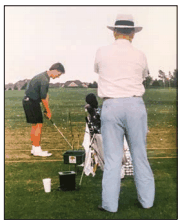 By Thomas T Wartelle, USGTF Master Golf Teaching Professional
Washington, Louisiana
By Thomas T Wartelle, USGTF Master Golf Teaching Professional
Washington, Louisiana
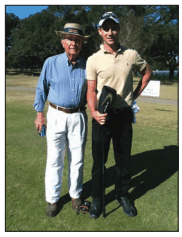 When I got home, I wrapped duct tape on the end and formed a grip. The neighbor had a few old balls in his storeroom. I took a few swings and was instantly hooked. There was one minor issue: I was left-handed and this club was for a righty. Oh well, at least it was free!
When I got home, I wrapped duct tape on the end and formed a grip. The neighbor had a few old balls in his storeroom. I took a few swings and was instantly hooked. There was one minor issue: I was left-handed and this club was for a righty. Oh well, at least it was free!
 My Pop was truly a special man and one of a kind. Pop liked to let you figure things out on your own. He guided and mentored, but never dictated. His sense of humor was amazing. Most of all, he was always passively supportive. When I finished my last final exam in college, I told Pop that I was going to turn pro and fly over to Europe to play the European Tour. He told me to follow my dreams. I didn’t even go to my college graduation. I turned pro the next day and drove to Florida to play mini-tour events until my venture to Europe that autumn. For the next 30 years, the game of golf took me to over 40 countries playing and teaching with some of the most influential people in my life. Pop gave me that gift with a cheap set of golf clubs from JCPenney. What an investment he had made!
My Pop was truly a special man and one of a kind. Pop liked to let you figure things out on your own. He guided and mentored, but never dictated. His sense of humor was amazing. Most of all, he was always passively supportive. When I finished my last final exam in college, I told Pop that I was going to turn pro and fly over to Europe to play the European Tour. He told me to follow my dreams. I didn’t even go to my college graduation. I turned pro the next day and drove to Florida to play mini-tour events until my venture to Europe that autumn. For the next 30 years, the game of golf took me to over 40 countries playing and teaching with some of the most influential people in my life. Pop gave me that gift with a cheap set of golf clubs from JCPenney. What an investment he had made!
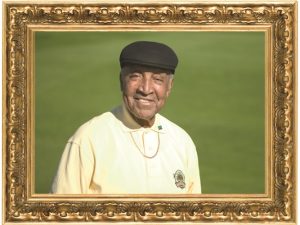 He came to a USGTF certification course in January 1993 in Naples, Florida. It wasn’t long before he captivated everyone with his demeanor: confident yet humble, quiet yet with plenty to say, and dignified yet playful.
He came to a USGTF certification course in January 1993 in Naples, Florida. It wasn’t long before he captivated everyone with his demeanor: confident yet humble, quiet yet with plenty to say, and dignified yet playful.
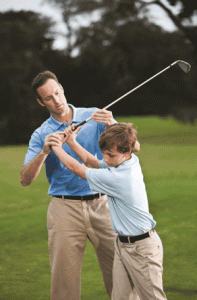 By Jordan Fuller
USGTF Contributing Writer, Omaha, Nebraska
By Jordan Fuller
USGTF Contributing Writer, Omaha, Nebraska
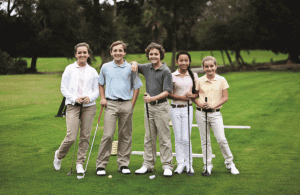
 By Steve Yacovelli, Ed.D.
USGTF Contributing Writer, Orlando, Florida
By Steve Yacovelli, Ed.D.
USGTF Contributing Writer, Orlando, Florida
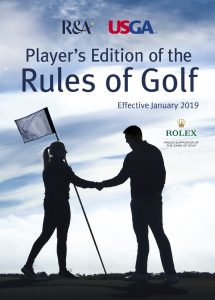 The start of 2019 brought the most extensive changes to the Rules of Golf in perhaps their entire history. Many of the longstanding ways the Rules were understood and executed were turned on their heads.
The start of 2019 brought the most extensive changes to the Rules of Golf in perhaps their entire history. Many of the longstanding ways the Rules were understood and executed were turned on their heads.